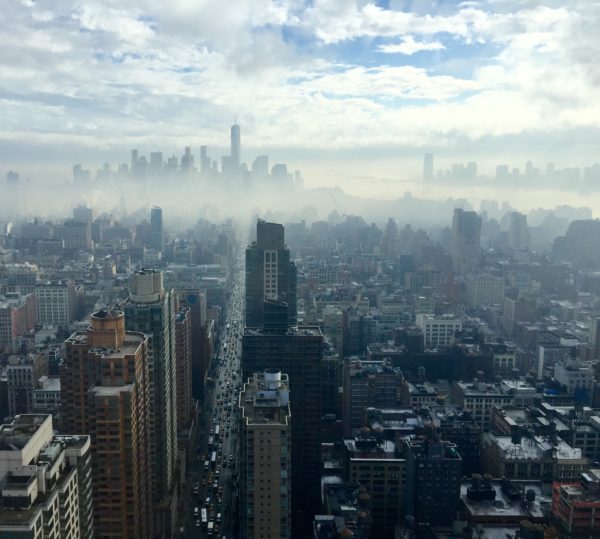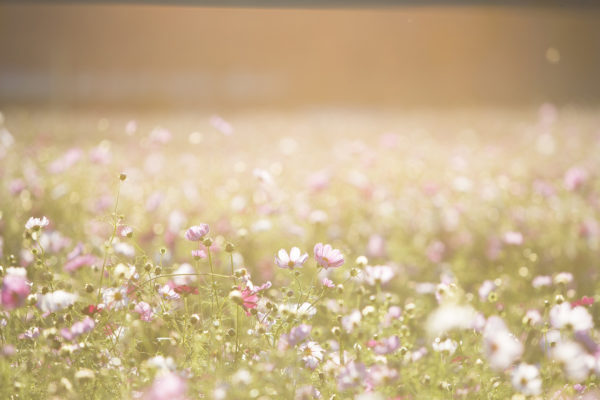Do you suffer from summer allergies? Stay prepared for all your summer fun with our guide to common summer allergy triggers and prevention tips.
While spring and fall tend to be the height of allergy season, summertime can also be an unpleasant time for those who suffer from seasonal allergies.
As you’re spending more time outside, your exposure to allergens like pollen and mold increases. In addition to the common environmental allergy triggers that exist during spring and fall, summer has its own set of unique factors that cause allergies to spike. High temperatures, carbon dioxide in the air, and air pollution all contribute to allergic reactions during the summer months. Whether you’re headed to a music festival, the beach, or a rooftop barbecue, make sure to follow this guide on how to recognize and reduce summer allergy symptoms.
What’s Causing Your Summer Allergies?
Polluted City Air

Air pollution causes problems all throughout the year, but it is especially prevalent and a factor in aggravating allergies during the summer. The warm temperatures and longer days are enticing to spend more time outside, however, increase your exposure to air pollution. Whether it’s the exhaust from motor vehicles, dust from construction, chemical sprays from groundskeepers, or cigarette smoke from a nearby tourist, air pollution irritates your respiratory system causing coughing and sneezing fits, itchy eyes, and even skin problems. Curious about how air pollution affects your skin? We wrote a whole blog post about it!
Carbon Dioxide in the Air

Experts in the allergy, immunology, and other related health professions have noticed an increase in patients suffering from allergies well past the typical spring allergy season. Dr. Kevin McGrath, a Board of Regents member of the ACAAI explained how research has shown a correlation between carbon dioxide levels and allergies:
We have all been seeing, clinically, increasing pollen seasons, a little longer pollen seasons…that’s our clinical experience, and most allergists have recognized that […] Here is the science: to show the reason why we’re seeing higher pollen counts and maybe a longer pollen season—and that would be the increase in carbon dioxide level.
Plants thrive on carbon dioxide, and with an increase of this in the air from the burning of fossil fuels and rising temperatures, plants and molds are producing more spores. The growth rate for molds and plants increases and the growing season lengthens. Because of this extended growing season, allergy sufferers are experiencing allergic symptoms throughout the summer months. For a season that is celebrated for its outdoor activities, allergy sufferers are finding little to be excited about when faced with prolonged allergy symptoms.
Hot Temperatures

High ozone and smog tend to occur on days when temperatures are very warm. This goes hand in hand with the first allergy trigger covered, air pollution. Heat in general has its own way of triggering allergic reactions, and that depends on the moisture levels in the air.
Hot and Humid: Warm temperatures mixed with very humid air quality create the ideal situation for mold to grow. With increased carbon dioxide levels in the atmosphere, the more mold spores growing, the more problems there will be for allergy sufferers.
Hot and Dry: When air is dry, the protective layer of mucous lining your sinuses and nasal passages dries. When this happens it is much easier for bacteria or allergens to irritate your respiratory system, causing you to either get sick or experience allergic reactions. Heat also dries out the ground where pollen falls, so when it is hot and dry out, pollen is more likely to be picked up by the wind and travel through the air, worsening allergy symptoms. That’s why allergies tend to be bad on windy days during a dry spell.
Preventative Measures to Ease Your Summer Allergies

While there is no cure for allergies, there are preventative measures you can take to protect yourself from having a full-blown allergic reaction. While these environmental allergy triggers are virtually out of your control, what you can control is how well your prepare yourself to deal with these allergens. A lot of allergy prevention comes down to maintaining healthy indoor air quality and understanding how these allergens affect you.
Follow these preventative tips for facing summer allergies and keeping your indoor environment allergen-free all summer long:
- To ensure that you are not bringing allergens indoors, remove shoes before entering your home and remove/wash the clothes you were wearing immediately.
- Give your pet a wipe down to remove any pollen or bacteria that may have attached to their coat while being outside.
- On days when pollen levels are high, keep your windows closed. As nice as a fresh breeze is, keeping those allergens out of your home is your best bet to prevent an allergic reaction.
- While you have your windows closed and are running an air conditioner, keep in mind that air-conditioned air can become dry and stale. Running an Venta Humidifier will provide the perfectly humidified air you need to enjoy your indoor environment. The Venta Humidifier never over-humidifies, maintaining a relative humidity level between 40 and 60%, so you never have to worry about mold growing from too much humidity. Any allergens that are in your air will be trapped in the humidifier and remain in the unit. Only pure air is released back out into your room.
- Shower before going to sleep so you don’t bring any unwanted allergens to bed!
- Wash your sheets regularly. Beds are commonplace for dust mites to be found, combined with any additional pollutants that get brought to bed, it’s not a bad idea to wash your sheets more regularly when you’re spending more time outside.
- Check pollen counts, ozone levels, and weather forecasts ahead of time before heading out for the day. Plan your day accordingly based on these forecasts so you can be as proactive as possible. Make sure you check out our blog post on the best free allergy and asthma apps out there today. These apps let you do so much more than just check temperatures and pollen counts. You can track your asthma or allergy symptoms, set prescription reminders, and even locate the nearest allergy specialist, all from an app!
- Know which medications work best for you. If possible, pack travel-size bottles or boxes of these medications that you can take with you to an amusement park, music festival, or any other outdoor activity where you can’t always have a pill bottle on hand.
- If you’re a fan of drying clothes outside, think twice before next time. Pollen and other pollutants collect easily on clothes left outside.
Be Prepared and Be Aware
Much like any kind of chronic illness, dealing with allergies and asthma can feel like it is taking over your life. When it’s the height of summer and outdoor activities, that is the last thing you want to be dealing with. Knowing what preventative measures to take will prevent allergies from becoming a bummer on your summer plans.
How do you deal with unpleasant allergy symptoms in the summer?

